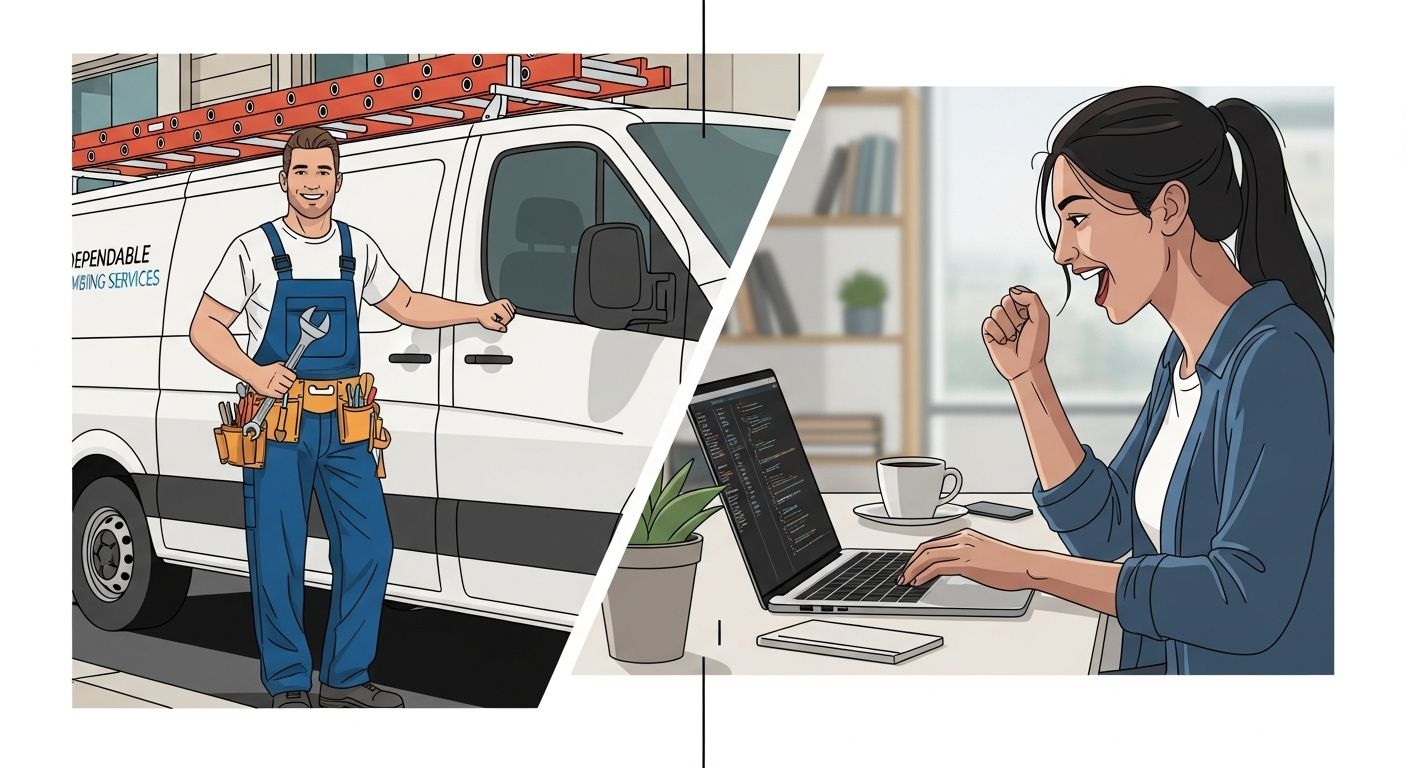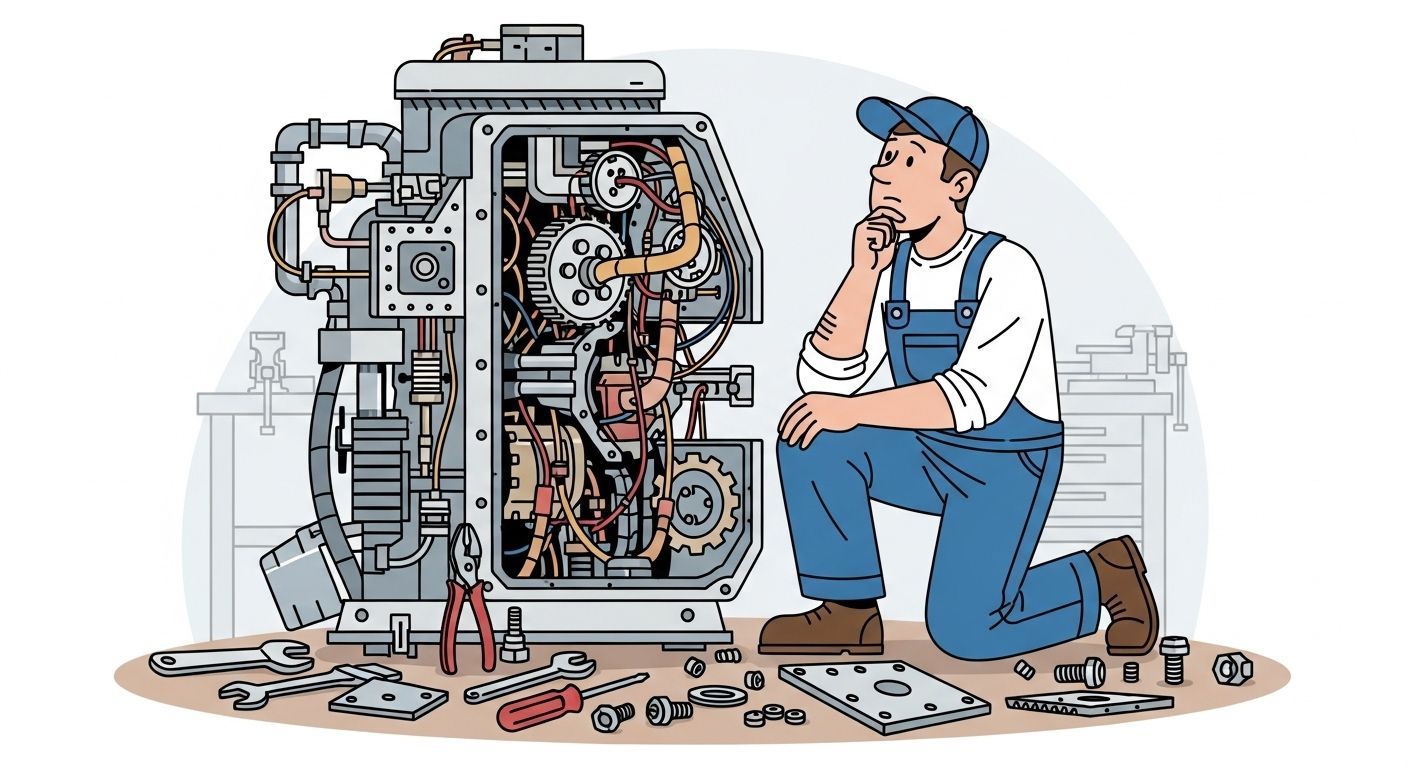Industrial "RFQ vs. Junk Lead" Dilemma: An Industrial Owner’s Guide to Pre-Qualifying Prospects
Doug Mansfield • November 4, 2025
Your estimator gets a "new lead" from the website. They spend 45 minutes researching the company and preparing for the call, only to discover it's a job seeker, a parts salesperson from overseas, or a "tire-kicker" with no budget and a vague idea scribbled on a napkin.

This isn't just an annoyance; it's a direct drain on your most valuable resources. It wastes the time of your estimators, engineers, and sales staff, pulling them away from high-value tasks. This is why so much "process-driven marketing" feels like a money pit, full of random activity that fails to increase sales conversions.
This is the core of the industrial marketing dilemma. You're stuck between two very different types of inquiries:
- The "Junk Lead": A vague inquiry, a solicitor, a job applicant, or a competitor.
- The "Qualified RFQ": A prospect with a specific need, a clear understanding of your services, and often, a spec sheet or drawing in hand. This is a true Action—the kind that affects your bottom line.
The problem isn't your lead-gen volume; it's your lack of a filter. Your digital marketing must be re-engineered from a "wide net" into a "pre-qualifying tool." This guide will show you how to use your digital presence—what we call the FADA® Marketing Framework—to filter out the junk and attract the RFQs you actually want.
The Diagnosis: Why Your Industrial Marketing Attracts Junk
Before we can fix the problem, we have to diagnose it. Your inbox is full of junk leads because your digital marketing is sending the wrong signals. This typically stems from three core symptoms.
Symptom 1: Your "Digital Foundation" is Too Generic
Your website is a "digital brochure" that speaks to everyone and, therefore, attracts everyone. It fails to establish you as a definitive authority. It lacks the technical depth—specifications, case studies, specific processes—that an engineer or procurement manager needs to see. We know a great website is a "sales challenge", not just a technical one, and a generic foundation fails that challenge.
Symptom 2: Your "Awareness" Strategy is Too Broad
Your SEO or ad campaigns might be targeting high-volume, generic keywords like "Houston machine shop" instead of high-intent, technical keywords like "5-axis CNC for Inconel" or "API-certified fabrication shop." You are "fishing" in a pond full of hobbyists and job seekers, not in the channels where project managers and engineers live. You aren't reaching the right decision-makers.
Symptom 3: Your "Differentiation" is Non-Existent
Your website uses common, expected claims like "Family-Owned," "Great Customer Service," or "Free Quotes". Because you don't clearly state what makes you uniquely valuable, you attract unqualified prospects who are just "price shopping." This forces you to compete on price—a race to the bottom that you can't win.
The Solution: Building Your "RFQ Filter" with the FADA® Framework
The solution is to stop "process-driven marketing" and build a strategic plan. At Mansfield Marketing, we use our proprietary FADA® Framework, which provides a structured approach to building a marketing engine that pre-qualifies prospects. The framework's basic principles are sequential: building a solid Foundation, creating Awareness, establishing clear Differentiation, and inspiring customer Action.
Here is how to apply it as your "RFQ Filter."
Step 1: Re-Engineer Your FOUNDATION for Authority
Your digital presence, or Foundation, is the critical first step. It must be a "digital bedrock" that establishes credibility. Stop telling prospects what you do and start showing them.
- How-To: Instead of a simple "Services" page, create detailed technical pages for your core capabilities. Include equipment lists, material specialties, and tolerances.
- How-To: Showcase proof. Post high-quality photos of your shop, your team, and your work. Prominently display your certifications (e.g., ISO, API, ASME) to build immediate credibility.
Step 2: Focus Your AWARENESS on High-Intent Decision-Makers
The Awareness component is about making the right people aware of your solutions. Stop casting a wide net; start "spear fishing."
- How-To: Focus your content and SEO+GEO (Search and Generative Engine Optimization) on long-tail, technical keywords that a procurement manager or engineer would type. Write articles that answer complex technical questions, ensuring you're found in traditional Google search and new AI-powered answers.
- How-To: Use LinkedIn to target decision-makers by job title (e.g., "Plant Manager," "Procurement Lead") and industry (e.g., "Energy") in the Houston area. Our team is LinkedIn Certified precisely because this is where B2B decision-makers live.
Step 3: Weaponize Your DIFFERENTIATION to Repel "Tire-Kickers"
Your "why" is your best filter. Differentiation is about answering one key question: "Why should I choose you over everyone else?".
- How-To: What is your true differentiator? Is it your proprietary process? Your superior safety record? Your specialized expertise in a niche like subsea components or aerospace parts?
- How-To: Weave this message into everything. This shifts the conversation from price to unique value. A prospect looking for the "cheapest" option will see you're not a fit and leave. A prospect looking for the best option will stay.
Step 4: Engineer Your "ACTION" Paths to Filter Inquiries
This is your active filter. The Action component focuses on inspiring customers to engage and enter the sales pipeline. Stop using a single, generic "Contact Us" form—it's an open invitation for spam and junk leads that waste your sales team's time. Instead, create designated paths for each type of inquiry
- Create a Path for Job Applicants:
- How-To: Build a separate "Careers" or "Apply Now" page on your website. This page should have its own contact form built to collect applicant contact information and must allow for resume attachments.
- The Payoff: This immediately filters job seekers out of your sales inbox, preventing your team from spending valuable time sorting them from legitimate opportunities.
- Build Your "RFQ Form" (The Primary Goal):
- How-To: The main focus of your sales-oriented pages should be a clear, detailed "Request for Quote" (RFQ) Form. This form is your most powerful sales enablement tool.
- The Key: Your prospects will feel enabled to use this form only if it asks the right questions—questions they believe will result in a clear, accurate response. It should make sense to them (it gathers all the info they know you'll need) and to you (it gives your estimator everything they need to start).
- Must-Have Fields: Include fields like Project Name, Material Type, Quantity, Due date, and a mandatory file upload for drawings or spec sheets.
- The Payoff: A serious buyer expects this level of detail and will appreciate the efficiency. A spammer or "tire-kicker" will be discouraged by the form's specificity and won't bother.
- Include a "General Inquiry" Form (The Catch-All):
- How-To: You can still include a simpler "General Inquiry" form on your main contact page.
- The Purpose: This form acts as a catch-all for capturing sales leads who are still in the discovery phase. They may not be ready to submit a full RFQ but need answers to help them craft one. This still gives you a chance to engage them early.
- Offer "Gated Content" (The Pro-Qualifier):
- How-To: Offer high-value "gated content" like a technical white paper, an online calculator, or a design guide.
- The Payoff: A job seeker or solicitor won't download your "Guide to Pressure Vessel Materials," but an engineer or project manager will. You've just pre-qualified them as a serious prospect.
Conclusion: Stop Collecting Leads, Start Enabling Sales
The goal of industrial marketing isn't a full inbox; it's a valuable one.
By strengthening your Foundation with technical proof, focusing your Awareness on real decision-makers, clarifying your Differentiation to repel bad fits, and designing an Action that demands qualification, you stop collecting leads.
You start enabling sales.
You free up your experts to do what they do best: quoting serious projects and winning high-value contracts. As Houston's B2B and industrial marketing experts, we've seen this strategic shift transform businesses. It's time to stop wasting money on a "process" and start investing in a plan that affects your bottom line.
This blog post was created by Doug Mansfield, president and founder of Mansfield Marketing











